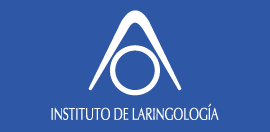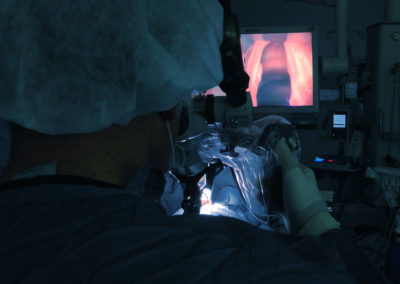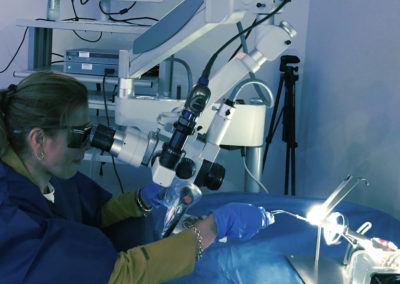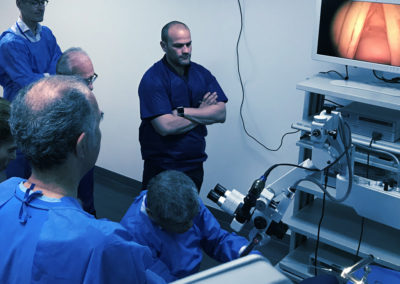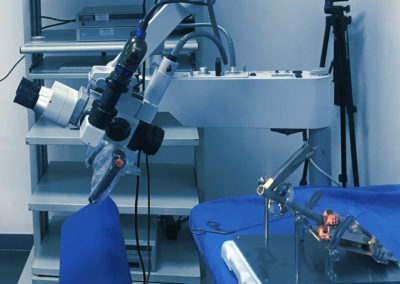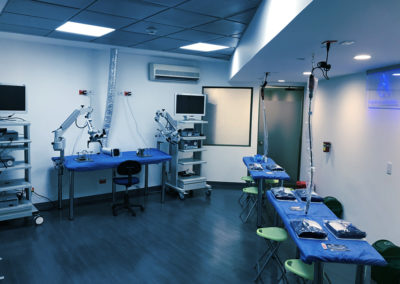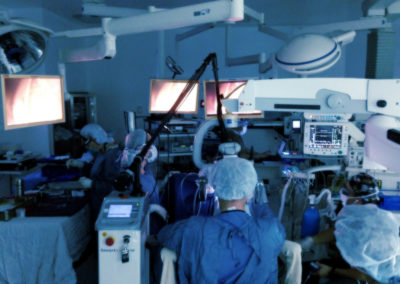FAQ’s
Frequently Asked Questions
How are the vocal folds examined?
In the 19th century, in Europe, a new era in medicine began when it was possible for the first time seeing the vocal folds using a small mirror that reflected the sunlight into the larynx. Recent technological advancements make it easier for the specialist to carry out a detailed inspection of the structure and furthermore evaluate its function by means of observation methods of vocal fold vibration. Nowadays, availability of high resolution video systems and high speed video cameras facilitate understanding of vocal fold function and alterations.
In most cases rigid endoscopes that are introduced through the mouth are used, although flexible scopes introduced through the nose can also be used. Since not all voices are equal, because the larynx of each human being is unique, it is imperative that the specialist can understand individual conditions of each patient, as well as the specific conditions of the vocal folds.
The steps to follow in the study of a dysphonia caused by structural problems of the vocal folds are:
1. Identification of anatomical conditions of the vocal folds. The specialist must determine, to the best possible extent, individual anatomical characteristics of the vocal folds in order to define if they have a direct relation with the voice problem. Any change in the structure might affect the vibratory capacity of the vocal folds and generate undesirable changes in voice quality.
2. Evaluation of vibratory activity of the vocal folds.
Since voice production is the result of vocal fold vibration, evaluation of this activity is fundamental to understand causes of dysphonia. Currently two methods are available for the evaluation of vocal fold vibration.
The one most widely used is laryngostroboscopy, based on intermittent illumination of the vocal folds while they are vibrating. The human eye can’t observe more than 4 movements per second, and the vocal folds do vibrate at much higher frequencies (an average of 100 times per second in males, 300 times per second in females and more than 1000 times in the case of a soprano), so it is necessary to count on systems that allow evaluation of this vibratory activity since the analysis of its characteristics is essential for the understanding of the causes of dysphonia. Stroboscopy makes it possible that, when reproduced, the different recorded segments be fused by the visual system, generating an illusion of movement that facilitates the observation of details.
The other option is high speed laryngoscopy. In this case it is a real time recording of all the events that take place during vibratory activity. Since each and every movement is recorded, it is possible to precisely see every detail of the vibratory process and to detect subtle variations that could cause a voice problem.
High speed cameras also opened the possibility to improve the observation and analysis processes of vibratory characteristics in any segment of the vocal folds. Kymography is a method that allows selecting any given point of the vibratory portion of the vocal folds; by means of reproducing a sequence of thousands of images of the events that take place in this specific point, it is possible to understand how minimal changes on vibration can generate physical effects that are perceived as dysphonia.
When is it necessary to undergo medical evaluation due to the conditions of the voice?
The voice is a key element in daily life, not only as an irreplaceable communication instrument in every activity of the human being, but also as a way of artistic expression. Those who use their voice as a working instrument (teachers, singers, preachers, speakers, politicians, actors, lawyers, etc. ) know the importance of maintaining a good quality voice in order to accomplish their professional activities without limitations.
Any change in voice characteristics deserves proper evaluation. Common symptoms are: Hoarseness, pitch changes, tiredness when speaking or singing, effort to produce voice, reduction of loudness, escape of air, tremor, spasms or voice breaks, pain while speaking or singing or emission of more than one sound. In all cases of voice disorders it is advisable to follow an ordered and efficient diagnostic process with the aim of precisely determining the cause of the problem.
At the Instituto de Laringología we have the knowledge, the professional experience and state of the art technology to perform a comprehensive evaluation of every single case.
Under what circumstances is it necessary to perform surgery of the voice?
Surgery of the voice, known as phonosurgery, is a relatively new subspecialty. Its development has come along with technological advancements in the diagnostic field (stroboscopy, high speed laryngoscopy, videokymography, high definition laryngoscopy), which have made it possible to perform better evaluation of the anatomy and function of the vocal folds. Phonosurgery includes a series of surgical techniques, most of them of microsurgery, and some others that require incisions in the neck, The purpose of them all is to improve the vibratory capacity of the vocal folds, condition that ensures the production of an adequate voice. Surgical interventions are not necessary in all cases in which lesions or structural changes of the vocal folds are found.
There are a good number of lesions that, although produce changes in the appearance of the vocal folds, do not affect their function, nor are malignant tumors and for that reason are not an indication for surgical treatment. It is imperative to keep in mind that any surgical intervention is a controlled trauma, and such trauma must be avoided whenever possible. Surgical treatment should only be considered in cases in which benefits of the intervention are clear and more important than risks.
Types of surgical interventions
Once a comprehensive evaluation of the condition of the vocal folds has been performed, and it is clear that there are important vibratory changes caused by any structural change or lesion that explains the presence of dysphonia, surgical treatment may offer benefits in properly selected cases.
Microsurgery
The vast majority of phonosurgical procedures can be carried out using a laryngoscope, which is a rigid tube that is placed inside the mouth and throat to allow access to the larynx in order to work on the vocal folds with micro surgical instruments with the aid of a microscope that magnifies the image so the surgeon has the possibility of observing even the smallest detail of the conditions of the structures.
Variability of the type of lesions that can be found is immense; most of them are benign, but it must be remembered that it is also possible to have cancer in the larynx. Differentiation among benign and possibly malignant lesions can usually be made by means of detailed endoscopic examination, although there are cases in which it is indispensible making biopsies to clarify the diagnosis.
By means of this approach it is also possible to perform injections on the vocal folds. This kind of procedures might be necessary in cases of unilateral vocal fold palsy caused by different problems such as thyroid surgery or trauma. Dr. Campos has a great deal of experience with autologous fat injection (fat obtained from the abdominal wall of the same patient). In properly selected cases that comply with several prerequisites, it is an excellent technique that ensures long lasting results with permanently stable voice quality.
In selected cases it might be necessary to perform interventions through incisions in the neck with the aim of modifying shape, size or position of the structures of the laryngeal framework to improve voice quality. The most common of these procedures is type I laryngoplasty, a technique that allows to push the vocal fold from the outside to improve its position.
Gallery
ADDRESS
Avenida 9 # 116-20
Consultorio 602
Bogotá D.C. Colombia
Call us
(+57) 215 2517
(+57) 637 3406
EMAIL US
contacto@inslar.com
